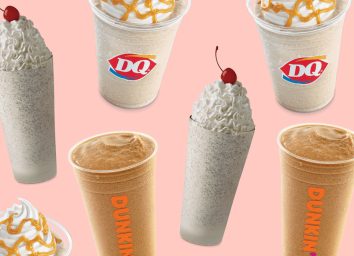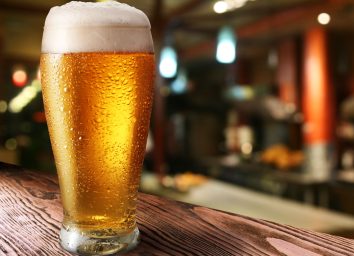The Worst Drinking Habits for Your Waistline, Say Experts
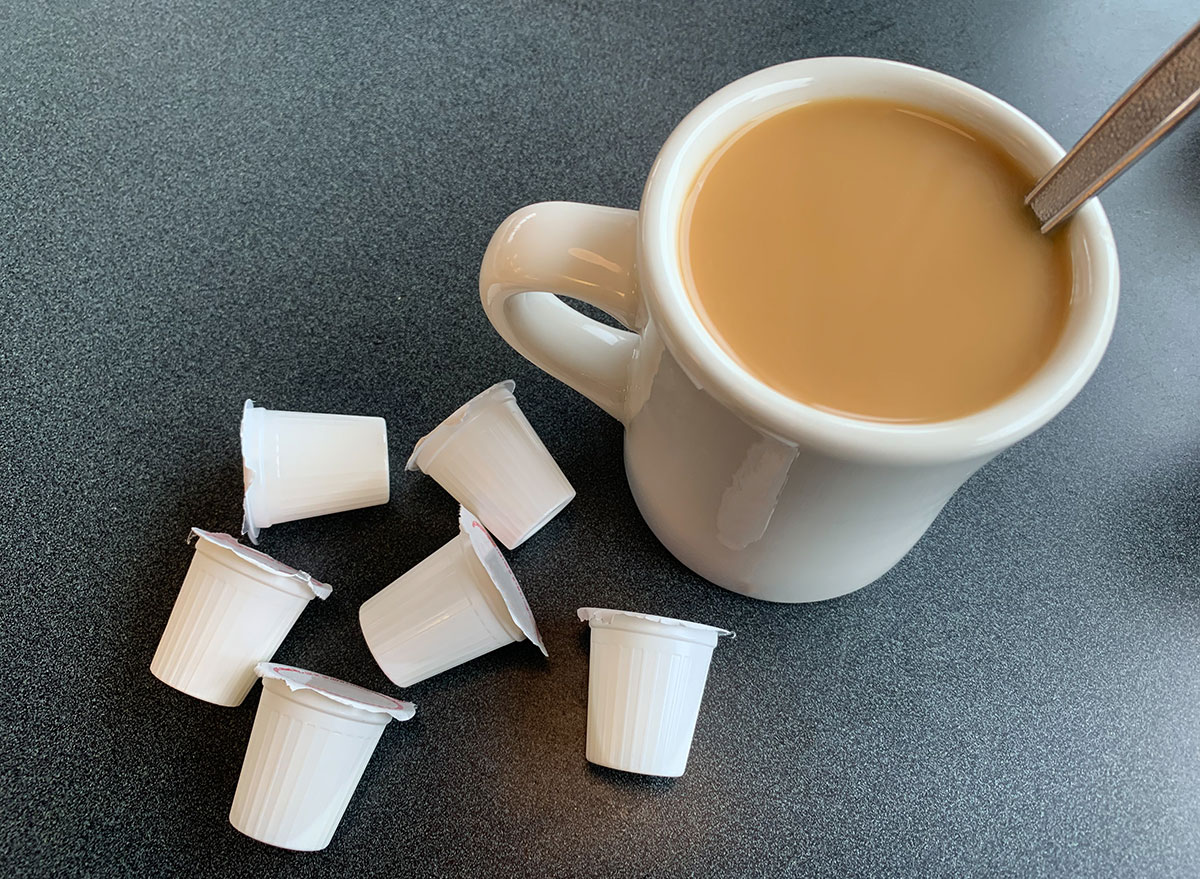
Ever wondered why you just can’t slim down, no matter how healthy your food choices are? Well, the culprit might be what you’re sipping on—because liquid calories can add up in a sneaky way, totally sabotaging your diet and exercise efforts.
“A lot of us assume that it’s just what we eat that matters when it comes to overall weight, but really what we drink matters just as much,” says Ashley Nader, RD. “When looking at our overall calorie intake for the day with just one sugary drink at every meal, we could be adding somewhere in the ballpark of 500 plus calories and even up to 150 grams of added sugar. These numbers can absolutely adversely affect our waistlines, and our overall health and wellbeing.”
So, next time you’re feeling thirsty, heed the following words of warning from experts about the worst drinking habits for your waistline—and make sure to scope out the Worst Snacking Habits, too.
Drinking your fruit.
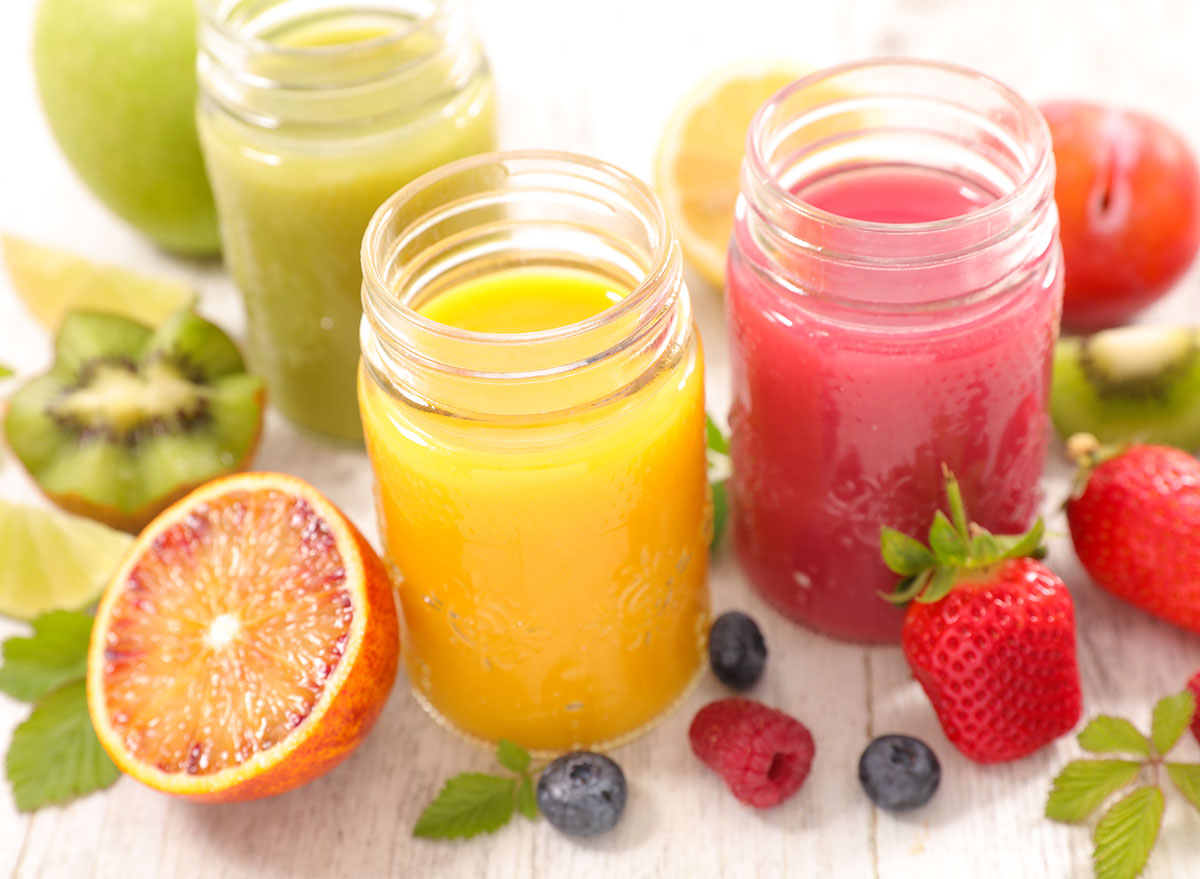
As a general rule, it’s always better to eat a piece of fruit than drink it through a straw. Why? For one, many juice companies add sugar to their beverages, which also increases the carb and calorie content. Plus, registered dietitian nutritionist Clara Lawson points out that juice doesn’t contain the beneficial fiber that its whole fruit counterpart has. And fiber is not only super important for ensuring you feel satiated, but it also helps to prevent the blood sugar spikes that can eventually lead to weight gain.
When you just can’t resist a glass of juice, make it a point to seek out unsweetened products, and stick with a 4-ounce (about 1/2 cup) serving. Here are the 5 Best Juices to Drink to Maximize Weight Loss, According to Science.
Choosing sugary cocktails.
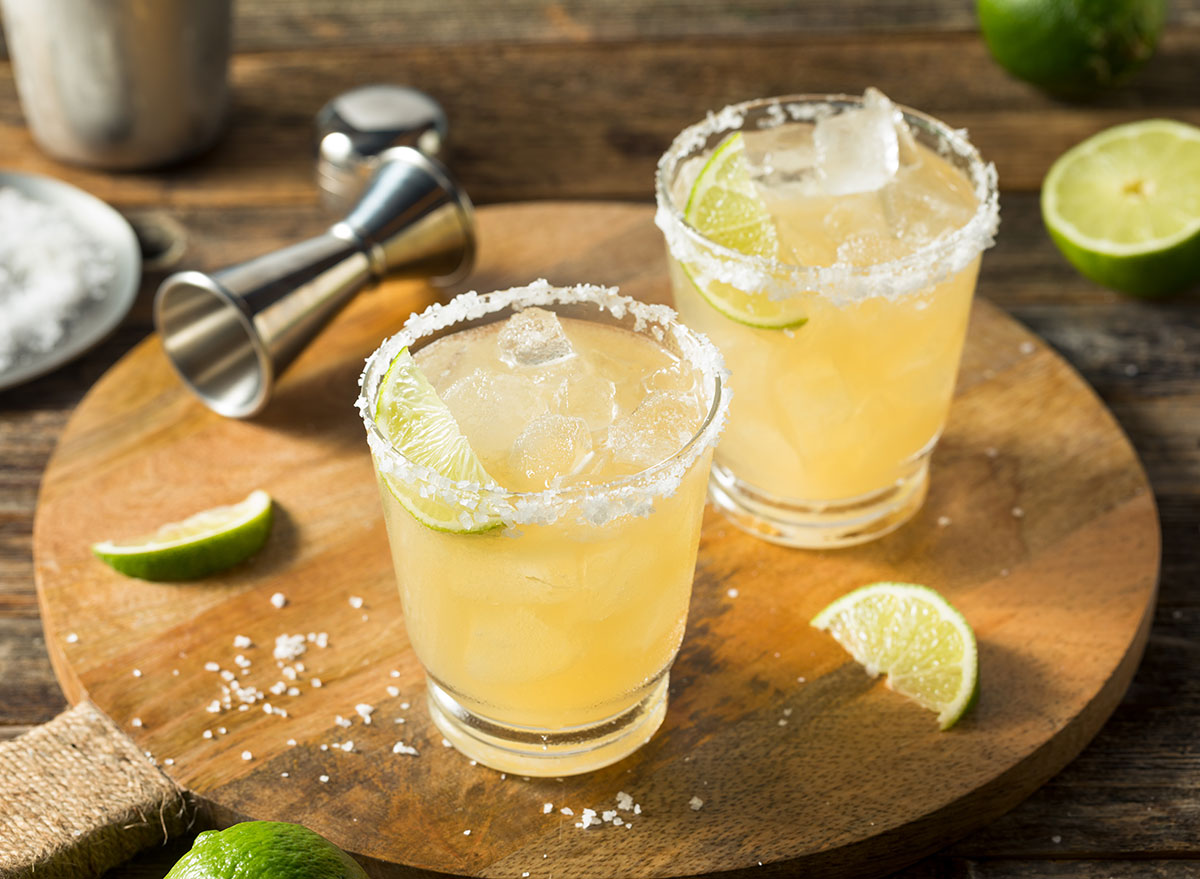
If your go-to drink at happy hour is a margarita or a mudslide, we bear some bad news: no matter what you’re eating, those drinks alone could be making it impossible for you to slim down. A mudslide can pack up to 740 calories and 26 grams of fat, while other frozen sugary drinks, like piña coladas, can set you back about 500 calories.
That’s why Lindsey DeSoto, RDN, recommends being mindful about what you’re ordering at the bar.
“Choose a lighter option such as vodka soda with lemon, low-carb beer, or a mocktail,” she advises.
Extra brut champagne is another healthy choice since it typically has less than 1 gram of sugar per glass.
“Stick with one single spirit alone with soda water and citrus or fresh herbs for flavor,” suggests Nader.
Overindulging in alcohol.
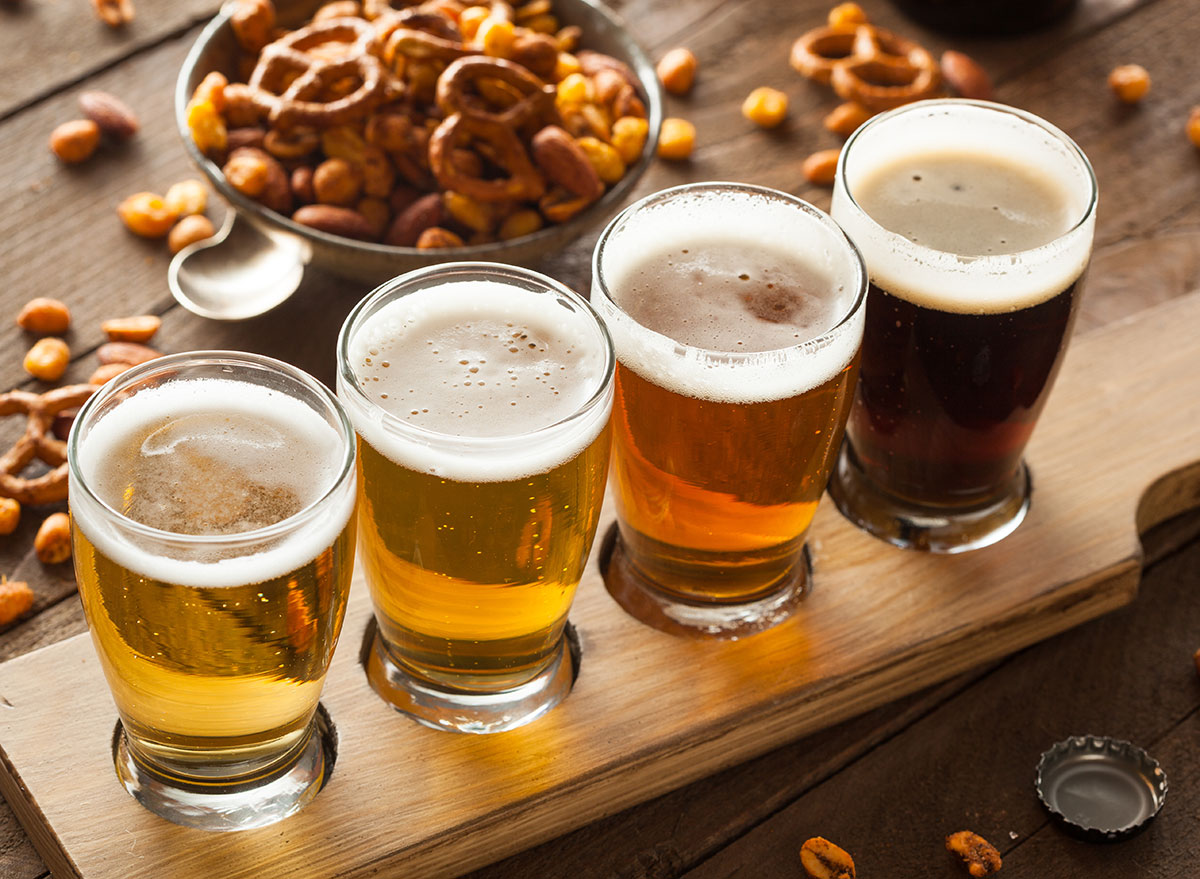
Speaking of adult beverages, Lawson says that moderation is key if you’re watching your waistline. Not only does it provide “empty calories,” but it can mess with your metabolism and trigger some serious munchies, too.
“Alcohol hinders the ability of your body to burn fat, makes you feel hungry, and results in unhealthy eating habits,” Lawson explains. “Limit your consumption to just one to two drinks per day.”
Related: Here’s What Happens To Your Body If You Drink Alcohol Every Day.
Choosing diet soda.
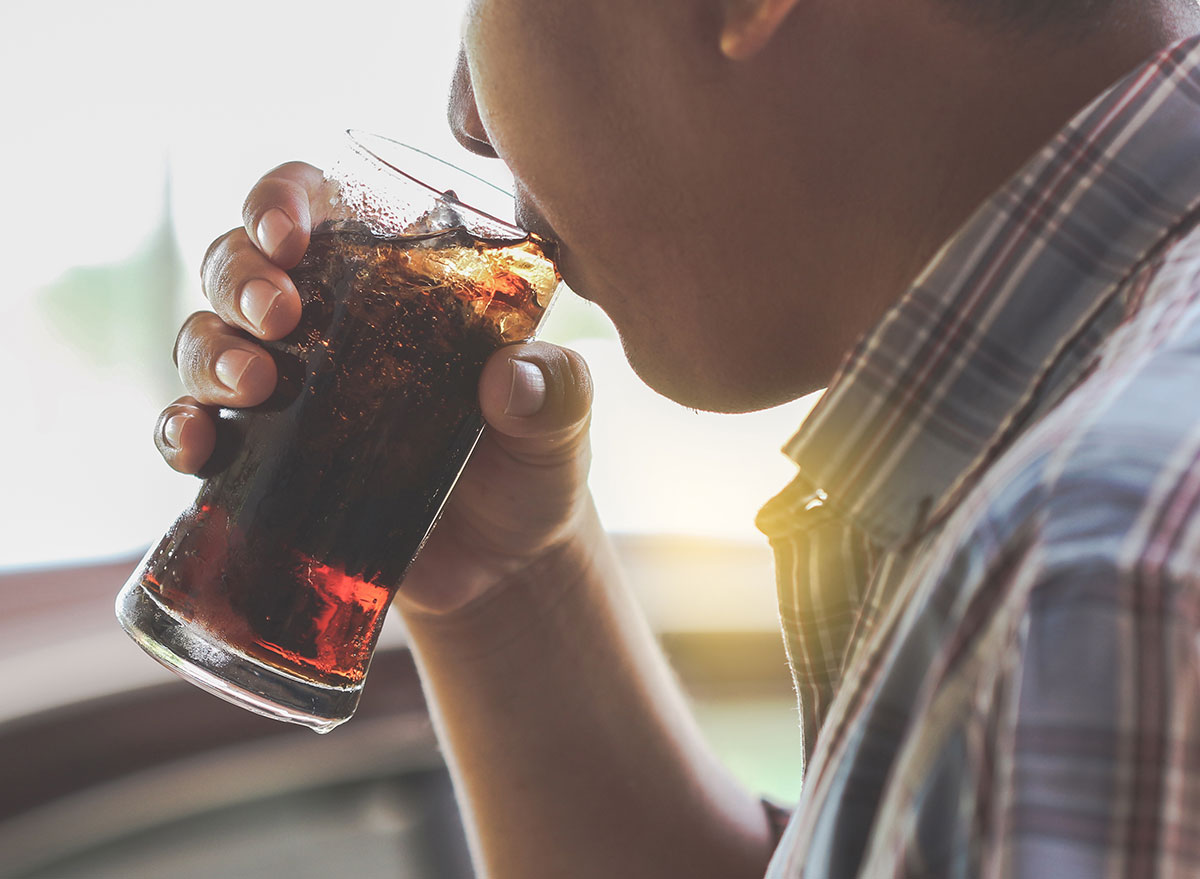
You probably already know that soda can wreak havoc on your body, mainly due to the sugar content. But even though it’s calorie-free, Lawson says diet soda isn’t necessarily a healthier choice.
Research has shown that diet beverages are significantly linked to more belly fat, obesity, and the development of metabolic syndrome. In fact, one 2015 study found that people who consumed diet soda daily experienced a waist circumference increase nearly four times greater than people who didn’t have diet soda over a 10-year period. Not only do artificial sweeteners seem to enhance cravings for higher-calorie foods, but research has indicated that they may interfere with blood sugar regulation, weight regulation mechanisms, and gut bacteria balance.
Instead of reaching for a diet soda, consider opting for flavored seltzer—which still has no sugar or calories, but doesn’t have any of those questionable artificial additives. Or, if you’re looking for something caffeinated, consider unsweetened or lightly sweetened sparkling tea. For example, Sound Sparkling Tea is so it still packs a ton of flavor from natural botanicals, but has 0 grams of sugar. CLEAN Cause sugar-free sparkling yerba mate is another option: it’s sweetened with erythritol, a naturally occurring sugar alcohol that research has found to be safe since it doesn’t raise insulin or blood sugar or cause concerning side effects.
Loading your coffee with creamer.
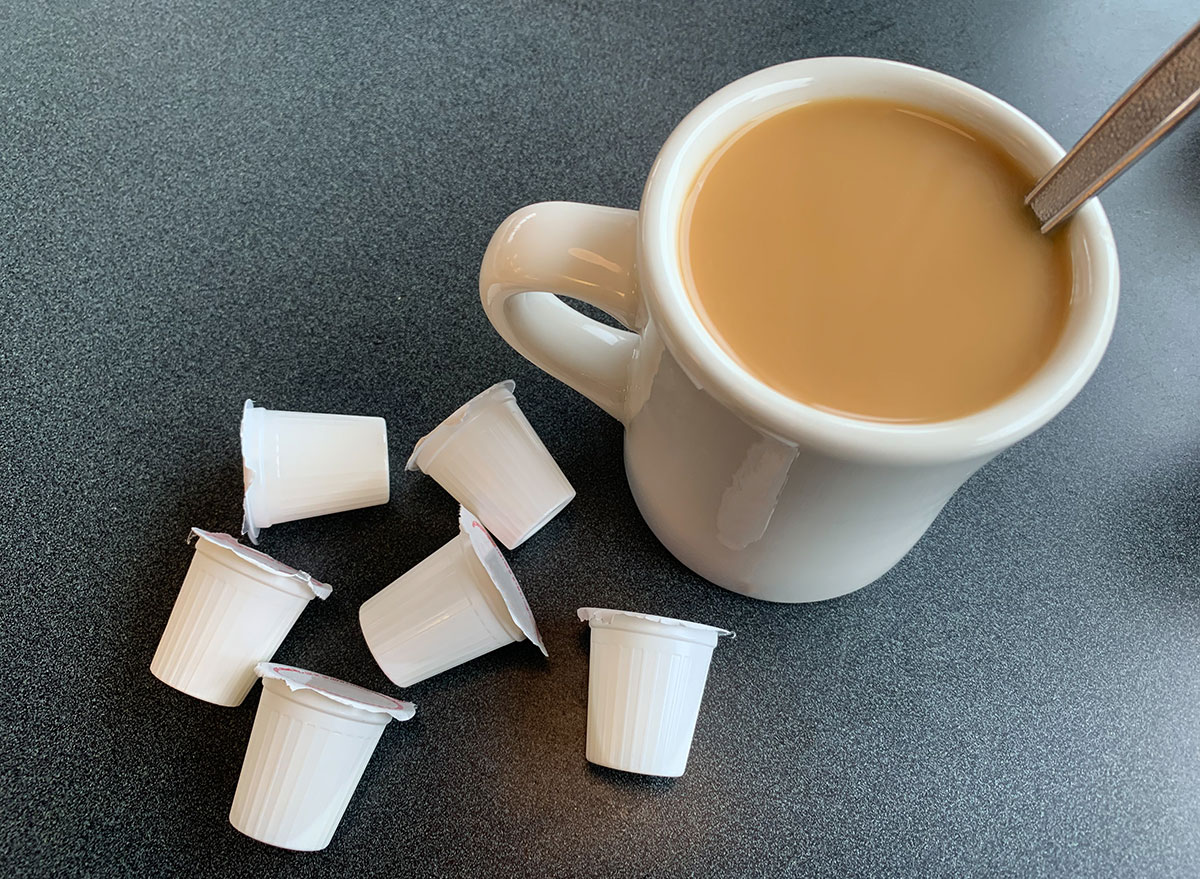
Especially if you drink java daily, it’s important to be aware of what you’re putting in it. According to DeSoto, those flavored creamers in particular can add a ton of calories without you even realizing it.
“Despite the label that typically reads 30 calories, most people do not measure this out, which leads to multiple servings that quickly can add up to 100 to 200 calories,” she explains.
Nader recommends flavoring your coffee with unsweetened vanilla almond milk, or oat milk if you want a creamier texture. Unsweetened coconut milk is another good option, and cinnamon or unsweetened cocoa powder can go a long way in perking up your cup without surging the calorie count.
Guzzling sports drinks.
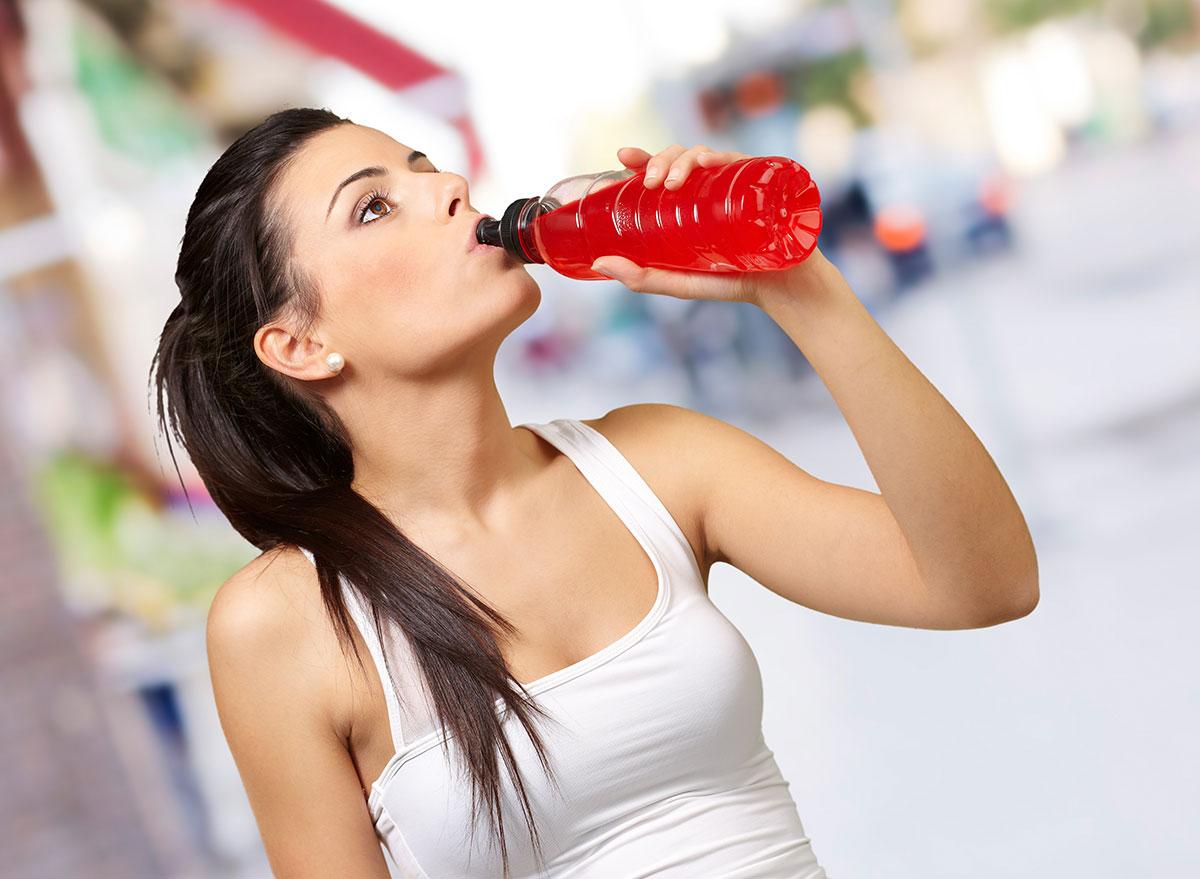
While those electrolyte-enhanced sports drinks may seem like a healthy choice to rehydrate after a grueling sweat sesh, many of them are high in sugar and calories, says DeSoto.
“A typical sports drink contains around 140 calories and you usually do not need the electrolyte replenishment unless you did a very intense workout exceeding an hour,” she adds.
So, you’re probably better off with a bottle of good old-fashioned H20. Or, as long as you’re working out earlier in the day and can handle the caffeination, you may want to consider pouring a cup of tea. Research shows that both green and black tea can be effective in supporting fat oxidation (which is when fat gets broken down, stored, and used for energy) during and after exercise.
Get even more healthy tips straight to your inbox by signing up for our newsletter! After, read these next:
